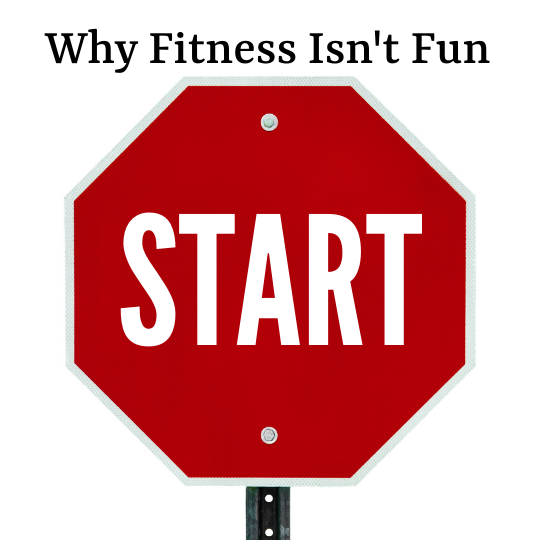A foundation of Funtensity is to make fitness fun while still providing adequate physical challenge.
But fitness most often isn’t fun. Too often with fitness, people stop before they start. And these are a few reasons why. These are some things that need to change in fitness.
- The Terrible Talk Test (Description)
- Instructors who say “You can do anything for a minute.”
- Long isometric exercises like static planks or wall sits
- Humans Run on Emotion (not Dunkin’, but not on Reason either)
The Terrible Talk Text
The talk test is a great way to quickly measure your intensity. The descriptions of the talk test in the popular media are terrible. I just read one the other day. It usually goes something like this: “If you are too out of breath to carry on a conversation while you are exercising, then you are working too hard.” Wrong. Anyone reading that will end up believing just about any intensity is too much. Any challenge will mean you cannot talk at normal conversational speed. The sweet spot is to need to pause for a breath every 4-6 words. You can still communicate, just not at a normal pace and rhythm. And you probably don’t want to talk much.
Instructors who say “You can do anything for a minute!”
They should try to stand on burning coals with bare feet for one minute. A minute is a loooooong time when exercising. This line is a favorite of bootcamp and small group instructors and it is just an awful cue. Even a relatively easy exercise can become quite difficult if done for a minute. Most people will cut corners on technique or intensity to survive the minute. And how demotivating it must be to hear this when you are already struggling at the 15 second mark! No, people cannot do anything for a minute and it is time we started meeting them where they are.
Long Isometrics
What a terrible idea to do a 5-minute plank challenge. It seems with fitness, all you need for an idea to get popular is to make sure it is a bad idea. Isometric exercises like planks and wall sits are good starter exercises to teach muscular contraction patterns for stability. With no movement, they develop no skill, do not transfer well to real life movements, and as an added bonus, they burn the least calories (since there is no true muscular work being performed.) If you want people to truly hate exercise, have them do long static planks or wall sits. A far better approach is to get people moving in a plank or a squat once they have mastered the basic exercise.
Humans Run on Emotion
People will never stick with exercise because it is good for them. They will stick with it because of how it makes them feel (mentally and emotionally) during and immediately after. Many people can lose track of time playing a pick-up game of a favorite sport (because they love to play) yet struggle to continuously exercise (because they don’t love chores).
There is a corollary to this as well. The fitness industry would be more effective with people if we stop pretending that being fit = being bubbly and happy all of the time. Life can be great, but it is filled with difficulty and pain as well. Just watch any nature show. Fitness lets you upgrade your pain. By working to build a more capable body you choose the pain of hard work (this does not mean it should be miserable…no I am not contradicting the previous paragraph) instead of choosing the pain of regret when your body fails you or limits you from doing something you want or need to do.
We humans make decisions based on emotion. Yes, even you, person who reads this and says, “Well, not me.” Yes, you too.
The sooner the fitness world stops asking you to take the path of most resistance and begins to help you enjoy the journey, the easier your path to consistent and sustainable fitness will be. Fitness is not easy, but it does not have to be as hard and as miserable as possible either.

